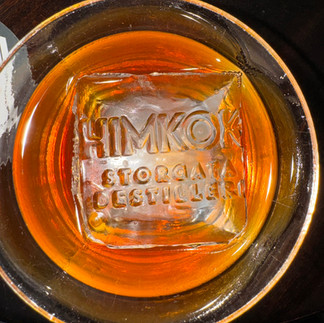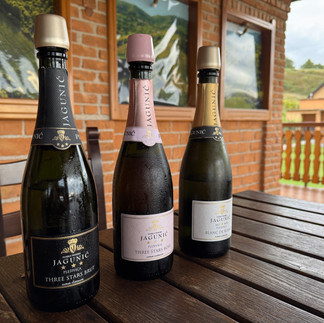Imbibing locally... for science of course.
- David

- Oct 28, 2024
- 5 min read
Updated: Aug 18
My fans have demanded that I try and write a monthly post, so here I am again. Ok, well fans with an “s” might be an exaggeration… it was really one fan, and demanded might also be a bit strong… maybe suggested? Anyway…
After 3 months of travel through 8 different countries, I think it is time to cover the really important stuff everyone has on their mind… the regional alcoholic beverages of course!
Whenever we travel, we like to try the local spirits to get a “flavor” of the country I’m in. So, let’s start at the beginning of our trip and work our way through.
Turkey - Raki is Turkey’s national drink. Made with twice-distilled grapes and flavoured with aniseed, the taste can be compared to Greek ouzo or sambuca. It is definitely one of those “burns on the way down” types of drinks, so make sure to have a chaser handy! The upside, at least for me, is that it comes with a bit of a black licorice after taste… yum.
South Africa - I wouldn’t say there is really a “national drink” in South Africa, but there are definitely two beverages that stood out above the others. The first being the wine and the second being Gin. In other words, Ilene immediately fell in love with South Africa given her propensity for G&T’s and good red wine.
Going into South Africa, I was aware that the regions around Cape Town were known as wine country. As we discovered, the Stellenbosch region in particular produces some excellent red wines with some really good Cabernets, Merlots, and some beautiful GSM blends. They also figured out how to make Pinot Noir taste good by crossing it with a grape called Hermitage to create Pinotage. The Pinotage was a bit hit and miss, but we did try a couple that really impressed us. And who can argue with the views from the wineries
The best part was that wine was very abundant and reasonably priced with very generous pours. In fact, one restaurant even poured to the top of a rather large glass… no measly California pour here! |  |
Overall, I was definitely tempted to ship wine back home, but alas while I would trust many of our friends and family with my life… I’m not sure I could trust them with my wine!
What I didn’t know was that South Africa produces its own gins. Apparently, the gin plants were brought to South Africa by the British in the 19th century because they couldn’t live without their Gin & Tonics. For troops stationed in more tropical areas the quinine in tonic water helped to ward off malaria, but the taste was too bitter and unpleasant without a nice pour of sweet, botanical gin.
We did a gin flight tasting at one restaurant where they brought 5 gins and 3 tonics which was an interesting experiment. Luckily, we walked home that night! |  |
Tanzania / Zanzibar - Nothing special to report here, South African wines were often found on the menus.
However, while on Safari, beer and wine were plentiful and weirdly enough Jack Daniels seemed to be everywhere. |  |
Norway - In Norway, we would often see these small glasses of clear liquid in bars or restaurants. Turns out, it is pretty typical to have an aperitif of Aquavit before or after a meal. Or, for that matter, as a warm up before a cocktail or beer. It is also traditionally consumed during celebrations like Christmas and weddings. Or, as we saw, just any old day of the week.
What is Aquavit you ask? It is a spirit distilled from grain or potato (like vodka), and it is most commonly flavored with caraway. But styles of aquavit vary and often include other spices such as fennel, coriander, and citrus. Like any distilled liquor some can be smooth and some are harsh. We had a chance to sample Aquavit at a small speakeasy in Oslo that made their own in house, and while it was good, I can see how it would warm your toes in the winter! That said, the cocktails at HimKok were pretty cool!
As a side note, Carlsberg beer would run a close second as a Norwegian national drink even though it's a Danish beer. The Scandinavian countries tend to be very connected both in historical leadership and beer.
Stockholm - From what I can tell, the Swede’s will drink anything and everything. Sadly, the government instituted laws to regulate consumption because it was becoming a health concern. We did go to one craft cocktail bar, Röda Huset (or Red House), that was making unique cocktails with locally sourced ingredients, so that was fun.
That said, for the Swedes, it’s all about the coffee. After all, who needs booz when you are drinking 6-7 cups of coffee/day (apparently the Finnish drink even more!) AND that is just the average per person! I get the jitters just thinking about it.
Croatia - Here it is all about the Rakija which is essentially brandy made from grapes, plums, pears, or apples. The base brandy is then flavored during distillation with all different sorts of spices such as anise, rosemary, carob… you name it. Rakija seems to come in so many flavors and variations it is hard to keep track. We tried a number of these flavors and the carob flavored could be dessert in a shot glass but with a bite. The alcohol content is around 40%, though homemade versions can be even stronger and let me tell you… pretty much everyone makes a homemade version. I think you’d lose your Croatian nationality license if you didn’t! By the way, if you noticed a similarity between rakija and the Turkish raki, that’s because there is a huge Ottoman influence throughout the region.
Also in Croatia, Maraschino is a renowned Croatian cherry liqueur made from the marasca cherry, a specific sour cherry variety grown predominantly in the Adriatic region, especially around Zadar. I had to stop Ilene from buying a bottle of this… primarily because she said she wouldn’t share it with me! And harmony while traveling is important.
And of course as we mentioned in one of our other blogs, Croatia has a couple wine areas and is well known for sparkling wines in the uplands region and red wines in the Dalmatia region to the south. The challenge they have is that they literally have hundreds of ancient varietals because they have been growing grapes in the region for so long and there was no real focus on larger scale wine production in previous generations. So there isn’t a lot of consistency. That said, the most celebrated wine is the Plavac Mali varietal which produces a really nice red with some complexity to it and also blends really well with Cabernet. Needless to say, we made our way through a few bottles of this.
Bosnia & Herzegovina / Montenegro - Since these countries border Croatia and have similar Ottoman influences, it’s not a surprise that Rakija is prevalent. Though here, I understand it can also be used to strip paint when needed. That said, Bosnia & Herzegovina does grow a red varietal called Vranac that’s decent. Apparently, this varietal dates back a pretty long time, but the wine making industry is still nascent so the overall quality isn’t up to the level of Croatia. Maybe in a couple decades.
That’s it for the moment. We are just entering the Spain and Portugal leg of the journey and I have very high expectations. Here in Madrid, Ilene has already discovered Tinto de Verano… but more on that later.
AND my promise to you, my faithful readers and "fan(s)"... I will not rest until I have imbibed of the local drinks in every country we visit!
Additionally, I have compiled a sophisticated ranking model consisting of 25 criteria across 15 vectors that has resulted in the star ranking system you see below. FYI, for those interested I will license the supporting data for a nominal fee. Enjoy!



























Very interesting! I do like that big pour you got. :)
Add me to the fan list! Looking forward to more posts, David!